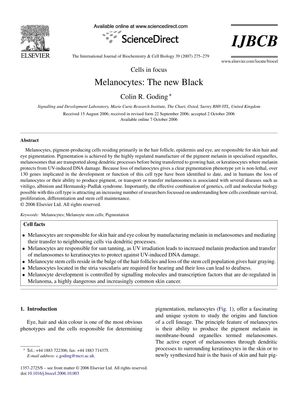Melanocytes: The New Black
October 2006
in “
The International Journal of Biochemistry & Cell Biology
”

TLDR Melanocytes are crucial for skin pigmentation and can affect conditions like melanoma, vitiligo, and albinism, as well as hair color and hearing.
The document from 2007 highlights the importance of melanocytes in pigmentation and their role in diseases and conditions such as melanoma, vitiligo, and albinism. Melanocytes produce melanin in melanosomes, which protects against UV damage, and their dysfunction can lead to pigmentation disorders. Over 130 genes are involved in melanocyte function, and their loss or mutation can result in conditions like vitiligo, characterized by the loss of pigment cells, and albinism, caused by defects in melanin production or melanosome function. Melanocyte stem cells in the hair follicle bulge are crucial for hair pigmentation, and their loss causes graying. Melanocytes are also vital for hearing, and their absence can cause deafness. Melanoma, a dangerous skin cancer, is linked to mutations in the BRAF gene and the Rb1 pathway. Treatments for vitiligo, such as low-dose UV irradiation, can reactivate dormant melanocyte stem cells, while albinism can impair vision due to disrupted retinal projections. The document underscores the growing interest in melanocytes as a model for studying various biological processes.

